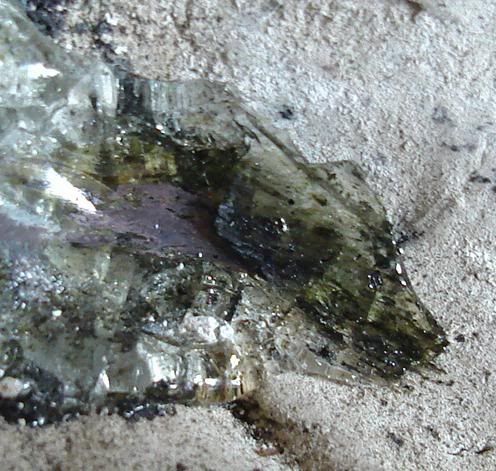You see, iron makes glass green in colour. Green glass was produced regularly in England, because they used yellow sand which has a high iron content, as little as 0.5% colouring the glass green. If you wanted really clear glass you had to use white sand or quartz, which were not widely found in the UK, more often found in Germany. However all through the medieval period window glass was imported from the continent.
A somewhat green british glass alembic can be seen here:

(From: http://www.exeter.gov.uk/timetrail/07_middleages/object_detail.asp?photoref=7_89, Exeter during the middle ages)
This is the glass before:

Sitting in a crucible of my own manufacture that has survived at least one firing up to the correct temperature.
So, I melted the glass to a gooey consistency, then dropped some rust on top, and stuck it back in the furnace for ten minutes more. After that time I took it out, partly because I was running out of fuel. The end result was this:

It’s not very exciting, is it? There was not enough time for the iron to diffuse through the glass, and also I had not mixed the metal in properly. Nevertheless a green tint should be visible. This is a fairly simple demonstration that I could carry out at an event without any trouble, especially if I mixed the iron into the glass properly. Moreover, different colours can be had with different additives.